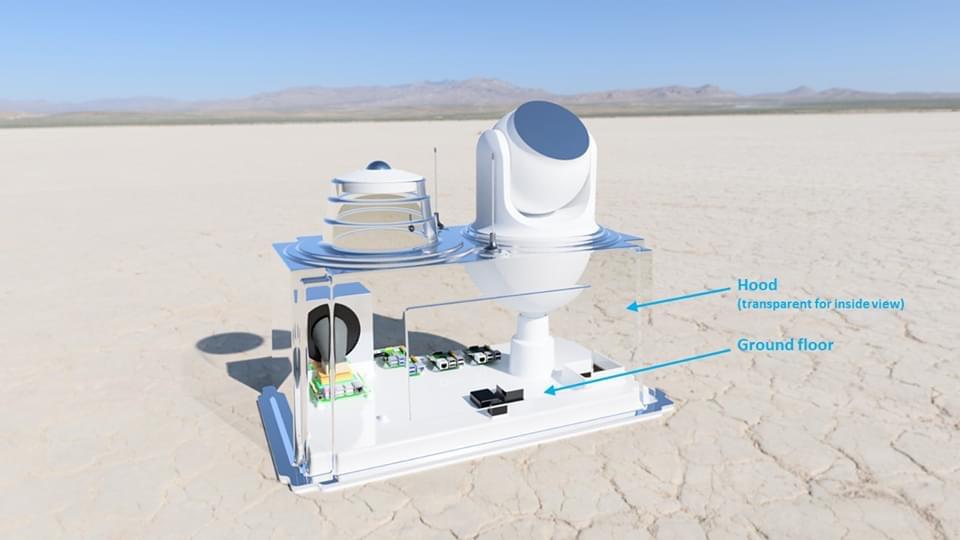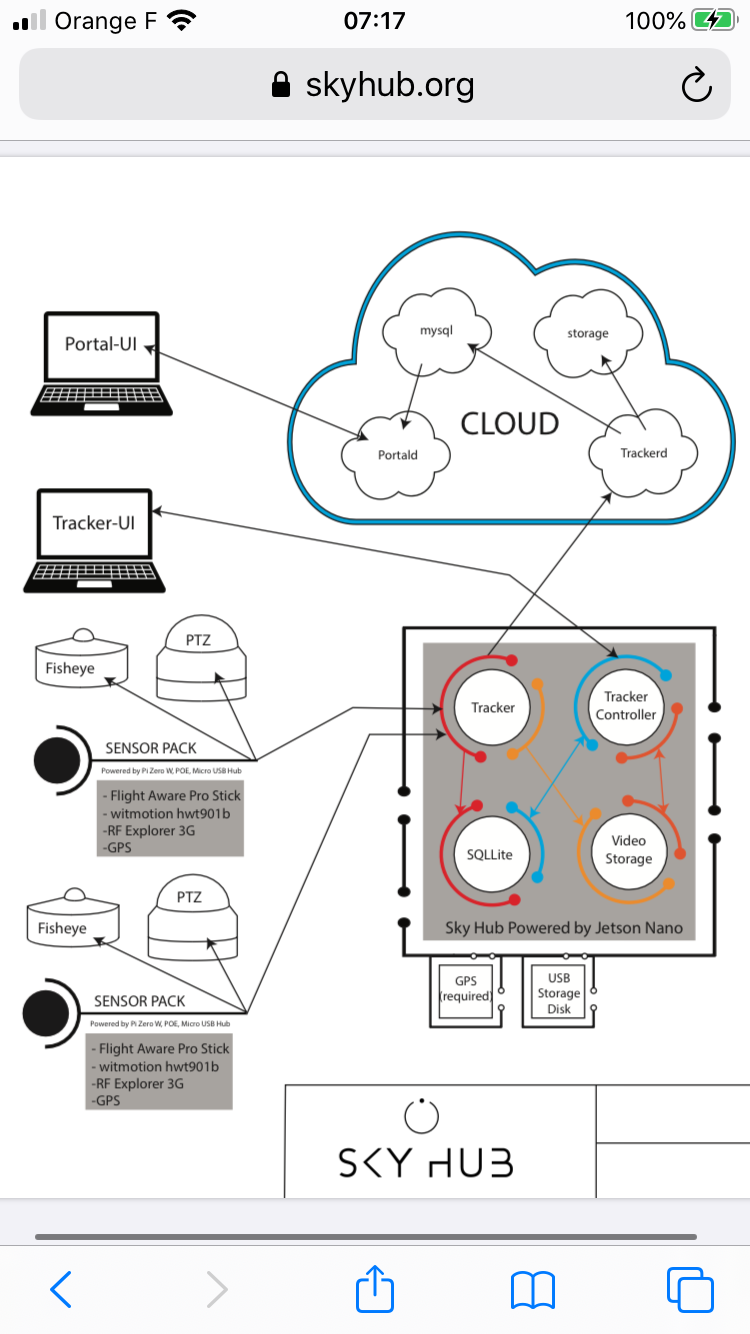Spotting UFOs: Do-it-yourself sky surveillance comes online

If you are perplexed, befuddled and bewildered about reports of unidentified aerial phenomena (UAP) and possible visitations of alien spacecraft, you can take action with do-it-yourself sky-monitoring gear.
Given the low cost and high capability of today's consumer-grade technology, you too can be at the ready to document out-of-the-ordinary events.
Enter the world of Sky Hub, a global network of smart sensors designed to snag digital signatures of anomalous events. This crowd-sourced network of smart trackers with "edge processing" uploads data of unusual phenomena to a Sky Hub Cloud.
The driving forces empowering the Sky Hub initiative center on the rapid growth and evolution of machine learning for streamlining the analysis of large datasets and the increasing affordability of artificial intelligence (AI)-ready hardware. These advancements can be harnessed to probe the ongoing, baffling behavior of UAP and unidentified flying objects (UFOs) reportedly crisscrossing the skies.
Related: 7 things most often mistaken for UFOs
Work in progress
The mission of Sky Hub is clearcut: Connect a network of civilian-owned sensor arrays, use machine learning to catalogue anomalous events, and share this data with researchers. The group itself consists of dedicated volunteers.
The Sky Hub system is a work in progress, said Christopher Cogswell, chair of Sky Hub's science advisory board. The group encourages individuals to join, but early adopters should be aware that the system software is currently in alpha, and hardware changes are still possible.
Get the world’s most fascinating discoveries delivered straight to your inbox.
The ultimate goal is building and hosting a worldwide, digital UFO database that anyone can access under a Creative Commons License using Sky Hub's open-source software.
"I have long been interested in why certain technologies or scientific concepts were readily accepted by society … while others become flashpoints," Cogswell told Space.com. Looking for UAP/UFOs "is not only an opportunity to make this something interesting, but also useful," he added. "There are lots of reports of objects in the sky that we don't know how to categorize that I think are interesting and worthy of study."

Public participation
Cogswell said that Sky Hub currently has 12 operational units. Most are in the United States, but there are some in the United Kingdom and one in Brazil. For the most part, the units are standard, using a fisheye lens camera and other hardware. Suggested specifications, such as a microcomputer built for machine learning and AI, are posted on the Sky Hub website.
"We don't want to run before we can walk," Cogswell said, but new ideas are always welcomed. The cost to assemble a Sky Hub unit for deployment can range from $600 to $1,000. "We're constantly trying to find cheaper alternatives. We want Sky Hub to be accessible to people," he said, "and having the public be part of this project with us is a worthy goal."
So far, Sky Hub equipment has captured meteors, imaged the International Space Station and even spotted flocks of birds, what appears to be a drone, and a paraglider. "We're open to those in other fields that can use Sky Hub where optical measurements and characterization can be useful," Cogswell said.
In diving into the UFO/UAP situation, "we are looking at this from a serious but skeptical perspective," Cogswell said. "In my opinion, there is something interesting happening here that's worth investigating. You can't deny that there are people who still make reports of UFOs every year. If it's all fake, in my mind, that's almost more interesting. How did something untrue become such a social phenomenon like this?"
Related: UFO watch: 8 times the government looked for flying saucers

All-sky searching
"There have been several such projects over the years to attempt to record UFOs," said Robert Sheaffer, a noted writer on the topic and a UFO skeptic. There are already numerous networks of meteor cameras set up today across the United States and other countries, he told Space.com.
For example, the American Meteor Society maintains an extensive all-sky camera registry. In addition, many astronomy groups and private observatories operate their own sky cameras to record meteorological phenomena and meteors, Sheaffer pointed out.
Sheaffer's take-home: "The people setting up UFO cameras apparently do not realize that there are already extensive automated camera networks all across the globe. But somehow astronomers' cameras do not record UFOs, just meteors. Those setting up 'UFO cameras' are fooling themselves if they think they will record objects that astronomers' cameras do not."

Technology demonstrators?
Point of fact: In August of last year, the Pentagon announced the formation of a UAP task force to gain insight into the nature and origins of UFOs. The mission of the task force is to detect, analyze and catalog UAP that could potentially pose a threat to U.S. national security.
Concerning the UAP situation, Scott Miller, chair and professor of aerospace engineering at Wichita State University in Kansas, offers an interesting point of view.
"I have been trying to follow the UAP stories. I suspect many sightings are still related to secret, not necessarily classified, aircraft activities, Miller said. "Interestingly, I strongly suspect all of the major defense contractors, and many new ones, have expanded their abilities to rapidly prototype vehicles."
Miller's view focuses on contractors eager to attract U.S. Department of Defense (DoD) dollars by building and flying their own technology demonstrators. "There are likely lots of non-government funded vehicles that have, are, or will be flying," he said.
Cool new things
There are some UAP sightings that are very interesting, and potentially not related to new secret aircraft, Miller said. "However, keep in mind that if we had seen an early Have Blue stealth fighter back in the '70s, we would have said there is no way it's an airplane."
The famous Navy "Tic Tac" UAP videos are interesting and perplexing, Miller said, but there are a number of things he's confused about.
"Specifically, why is it only the Navy that has seen the Tic Tacs? I believe the Air Force and Marines fly in the same airspace," he said. "Also, I think all of the Navy sightings were from F-18 E/F Super Hornet models. Is there something about the systems in these E/F series aircraft that facilitates a UAP sighting, for example, radar signal processing glitches, etc.?"
The aviation world, Miller suspects, is at a cusp. "We have the potential to design, build and fly new vehicles in months, not years. The aircraft won't necessarily be ready for production, but they can be used as technology demonstrators. I expect companies and DoD have looked at lots of cool new things," he said.
For more information on Sky Hub and the "how-tos" for constructing your own detection/tracking equipment, go to https://skyhub.org/.
Leonard David is author of the recently released book, "Moon Rush: The New Space Race" published by National Geographic in May 2019. A longtime writer for SPACE.com, David has been reporting on the space industry for more than five decades. Follow us @Space dotcom, Facebook or Google+. This version of the story published on Space.com.

Leonard David is an award-winning space journalist who has been reporting on space activities for more than 50 years.



